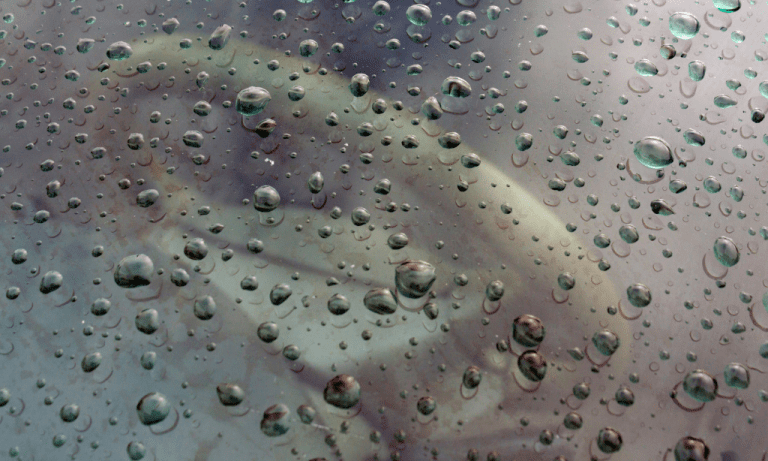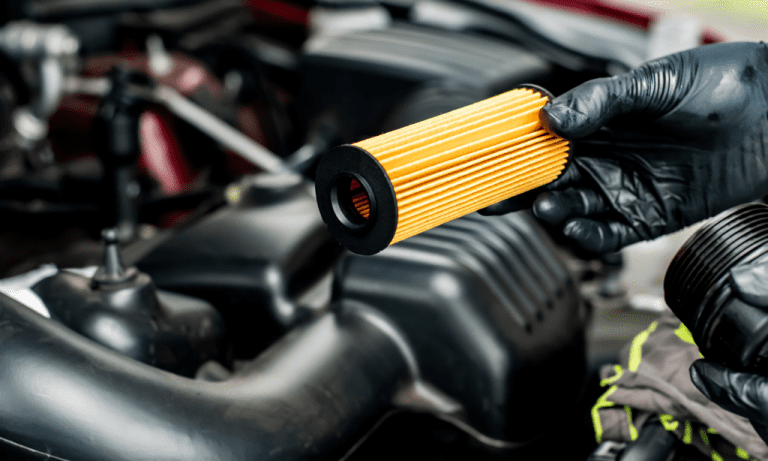Can You Spray Polyester Primer Over Bare Metal? Expert Tips Revealed!
Yes, you can spray polyester primer directly onto bare metal for optimal adhesion and protection. Polyester primer can be applied directly onto bare metal surfaces to provide excellent adhesion and protection against corrosion.
This type of primer is designed to promote a strong bond between the metal and subsequent coatings, such as paint or filler. By spraying polyester primer onto the bare metal, you can ensure a smooth surface for further refinishing work and enhance the longevity of the finished product.
Applying polyester primer directly onto bare metal is a common practice in automotive and industrial applications. It is important to thoroughly clean and prepare the metal substrate before spraying the primer for the best results.
Understanding Polyester Primer And Its Use On Bare Metal
Polyester primer is a versatile and popular option for preparing bare metal surfaces for painting. Whether you’re working on a car, a piece of furniture, or any other metal surface, understanding the properties and benefits of polyester primer is essential.
In this section, we will explore what exactly polyester primer is, how it differs from other types of primers, and whether it can be used on bare metal.
What Is Polyester Primer?
- Polyester primer is a type of primer specifically designed for metal surfaces.
- It is a high-build primer that provides excellent filling and sanding properties.
- It is typically available in a spray form, making it easy to apply evenly on various metal surfaces.
How Does Polyester Primer Differ From Other Types Of Primers?
- Polyester primer differs from other types of primers, such as epoxy, acrylic, or urethane primers, in terms of its composition and characteristics.
- It contains polyester resins, which give it exceptional adhesion and durability on metal surfaces.
- Polyester primers have a higher solid content, allowing for better filling and leveling capabilities compared to other primers.
Can Polyester Primer Be Used On Bare Metal?
- Yes, polyester primer can be used directly on bare metal surfaces.
- It adheres well to metal, providing a strong foundation for subsequent layers of paint.
- It helps to prevent corrosion and rust, prolonging the lifespan of the metal surface.
The Benefits Of Using Polyester Primer On Bare Metal
- Excellent adhesion: Polyester primer forms a strong bond with bare metal, ensuring long-lasting adherence and reducing the chance of paint flaking or peeling.
- Filling and leveling properties: Polyester primers are designed to fill in minor imperfections on metal surfaces, creating a smooth and even base for painting.
- Corrosion protection: By creating a protective barrier between the metal surface and the environment, polyester primer helps to prevent rust and corrosion.
The Limitations Of Using Polyester Primer On Bare Metal
- Surface preparation: Proper surface preparation is crucial when using polyester primer on bare metal. The metal should be thoroughly cleaned, degreased, and sanded to ensure optimal adhesion.
- Limited corrosion resistance: While polyester primer provides some degree of corrosion protection, it may not be sufficient for highly corrosive environments. In such cases, additional protective measures like topcoats or specialty primers may be necessary.
Overall, polyester primer is a reliable and effective option for preparing bare metal surfaces for painting. Its superior adhesion, filling capabilities, and corrosion protection make it a go-to choice for many painting projects. However, proper surface preparation and consideration of the intended environment are important factors to ensure the best results.
Preparing The Surface For Polyester Primer Application
Surface preparation is a crucial step when it comes to applying polyester primer over bare metal. By properly preparing the surface, you can ensure optimal adhesion and a smooth, durable finish for your project. In this section, we will explore the importance of surface preparation and the steps involved in preparing bare metal for polyester primer application.
Importance Of Proper Surface Preparation:
- Proper surface preparation is essential for ensuring good adhesion of the polyester primer and preventing it from peeling or flaking off over time.
- It helps to remove any contaminants or impurities present on the metal surface, such as rust, corrosion, dirt, or grease, which can hinder the bonding of the primer.
- Surface preparation also promotes the overall longevity and durability of the primer and subsequent paint layers, protecting the metal surface from environmental factors like moisture and uv damage.
Steps To Prepare Bare Metal For Polyester Primer Application:
- Removing rust and corrosion:
- Inspect the metal surface for signs of rust or corrosion.
- Use a wire brush or sandpaper to remove the rust, ensuring that you reach bare metal.
- For heavily corroded areas, you might need to utilize a rust converter or chemical rust remover to treat the surface before proceeding.
- Cleaning the metal surface:
- Thoroughly clean the metal surface to remove any dirt, grease, or other contaminants.
- Use a mild detergent or degreaser along with a scrub brush or sponge to clean the surface.
- Rinse the metal surface with clean water and allow it to dry completely before proceeding.
- Applying a metal etching primer:
- Metal etching primer helps to promote adhesion by creating a chemical bond between the surface and the polyester primer.
- Apply the metal etching primer according to the manufacturer’s instructions, using a brush, roller, or spray gun.
- Ensure that you achieve a uniform and even coating of the primer over the entire metal surface.
Factors To Consider When Choosing A Metal Etching Primer:
- Compatibility: Ensure that the metal etching primer is compatible with the polyester primer you intend to use.
- Substrate type: Consider the type of metal you are working with, as some metal etching primers may be specifically formulated for certain metal types.
- Coverage and drying time: Evaluate the coverage capabilities and drying time of the metal etching primer, as these factors can affect the overall efficiency and timeline of your project.
- Brand reputation and reviews: Research and select a reputable brand known for producing high-quality metal etching primers.
Properly preparing the surface before applying polyester primer is the key to achieving a long-lasting, smooth, and professional finish on your bare metal project. Follow these steps diligently, and consider the factors mentioned when choosing a metal etching primer for optimal results.
Techniques For Spraying Polyester Primer On Bare Metal
Spraying polyester primer on bare metal is a crucial step in achieving a smooth and flawless automotive finish. But before you dive into the application process, it’s important to understand the right techniques for spraying polyester primer on bare metal.
By following the correct procedures and using the appropriate spray equipment, you can ensure a professional-quality result. In this section, we will discuss the key techniques and considerations to keep in mind for a successful application.
Choosing The Right Spray Equipment For Polyester Primer Application:
- Use a high-quality spray gun with a nozzle size appropriate for polyester primer.
- Opt for a gun that provides good control and adjustable settings for airflow and fluid flow.
- Consider gravity-fed or hvlp (high volume low pressure) spray guns for optimal atomization and reduced overspray.
Setting Up A Suitable Workspace For Spraying Polyester Primer:
- Select a well-ventilated area or use a spray booth to ensure proper air circulation.
- Prepare the surface by cleaning it thoroughly and removing any rust, dirt, or contaminants.
- Ensure a temperature-controlled environment to facilitate proper drying and curing of the primer.
Safety Precautions While Spraying Polyester Primer:
- Wear appropriate personal protective equipment (ppe) including respiratory mask, goggles, and gloves.
- Follow the manufacturer’s guidelines for handling and disposal of polyester primer and cleaning solvents.
- Ensure proper ventilation to minimize exposure to harmful fumes.
Tips For Achieving An Even And Smooth Application:
- Hold the spray gun at an optimal distance of 6-8 inches from the surface for better control and coverage.
- Move the gun in a steady back-and-forth motion for consistent coating.
- Keep the gun perpendicular to the surface to avoid uneven build-up or runs.
Proper Thinning And Mixing Of The Polyester Primer:
- Consult the product’s technical data sheet for the recommended thinning ratio and mixing instructions.
- Use the appropriate solvent or reducer and follow the manufacturer’s guidelines.
- Thoroughly mix the primer to ensure a uniform consistency before spray application.
Spraying In Thin, Even Coats:
- Apply the primer in multiple thin coats rather than a heavy single coat.
- Overlap each pass by 50% to ensure complete coverage and prevent patchiness.
- Avoid excessive build-up by allowing sufficient drying time between coats.
Overlapping Spray Pattern For Complete Coverage:
- Utilize a systematic overlapping spray pattern to ensure all areas are covered evenly.
- Begin spraying slightly outside the target area and continue across it in a smooth, controlled manner.
- Maintain a consistent speed and distance to avoid uneven application.
Avoiding Excessive Build-Up Or Runs:
- Apply the primer in light layers to prevent excessive build-up and drips.
- Keep a close eye on the surface during spraying to quickly address any runs or sags.
- Sand down any imperfections before applying additional coats if necessary.
Drying And Curing Time For Polyester Primer On Bare Metal:
- Follow the manufacturer’s instructions for the recommended drying and curing time.
- Allow sufficient time for the primer to dry completely before sanding or applying additional coatings.
- Adequate curing time will ensure optimal adhesion and durability of the primer.
By following these techniques for spraying polyester primer on bare metal, you can achieve a smooth and flawless surface ready for further automotive finishing. Ensure you choose the right spray equipment, set up a suitable workspace, and take necessary safety precautions for a successful application.
Pay close attention to thinning and mixing, as well as spraying in thin, even coats, with overlapping patterns to achieve complete coverage. Keep in mind drying and curing times to allow for proper adhesion and durability. With these tips in mind, you’re well on your way to a professional automotive finish.
Troubleshooting Common Issues With Polyester Primer Application
When it comes to priming bare metal before painting, polyester primer is a popular choice due to its excellent adhesion properties and ability to fill in small imperfections. However, even with the best products on hand, issues can still arise during the application process.
In this section, we will explore some common problems encountered when spraying polyester primer and discuss techniques for troubleshooting and correcting them. So let’s dive in and address the challenges that you may encounter along the way.
Common Problems Encountered When Spraying Polyester Primer:
- Orange peel texture: This is a common issue where the sprayed surface ends up with texture resembling the peel of an orange. It can be caused by various factors such as improper spray gun setup, incorrect air pressure, or spraying too far from the surface. To fix this problem:
- Adjust the spray gun settings for a lighter application.
- Maintain the ideal distance between the gun and surface while spraying.
- Ensure the surface is clean and free from dust or debris before applying the primer.
- Fish-eye effect: Fish-eye refers to the appearance of small craters or tiny circular spots on the surface after priming. It occurs when the primer fails to adhere properly due to contaminants such as oil, grease, or silicone present on the surface. To resolve this problem:
- Thoroughly clean and degrease the surface before priming.
- Use a tack cloth to remove any dust or debris.
- Consider using a silicone remover to eliminate any silicone contamination.
- Adhesion issues: Adhesion problems can occur when the primer fails to bond properly with the bare metal surface. This can result in the primer peeling or lifting off. Common causes include:
- Poor surface preparation.
- Insufficient drying time between coats.
- Incompatible products used in conjunction with the primer.
To ensure proper adhesion:
- Clean the surface thoroughly and remove any rust or corrosion.
- Follow the manufacturer’s instructions regarding drying times between coats.
- Use compatible products for subsequent layers, such as paint or clear coat.
Causes Of These Problems And How To Prevent Them:
- Inadequate surface preparation: Properly cleaning and preparing the surface is crucial for achieving a successful primer application. Ensure that the surface is free from dirt, oil, grease, and any other contaminants before priming. Use sandpaper or a wire brush to remove rust or corrosion, and consider using a metal etching solution to promote adhesion.
- Incorrect application technique: Spray guns should be properly calibrated, and the correct air pressure and nozzle size should be used for optimal primer application. Maintaining the right distance between the gun and surface is also essential. Follow the manufacturer’s guidelines for recommended settings and techniques.
- Contamination: Contaminants like oil, grease, dust, or silicone can affect the adhesion and appearance of the primer. Take precautionary measures to avoid contamination by thoroughly cleaning and degreasing the surface. Use a tack cloth to remove any particles before priming.
- Incompatible products: Using incompatible products in combination with polyester primer can lead to adhesion issues or other problems. Make sure to follow the manufacturer’s recommendations for compatible topcoats, clear coats, or additional primers.
Techniques For Fixing And Correcting The Issues:
- Sanding: If orange peel texture or fish-eye effect occurs, sanding the affected area lightly can help smooth out the surface. Be careful not to sand too aggressively and remove too much primer.
- Recoating: If adhesion problems are encountered, recoating the affected area can provide a solution. Clean the area thoroughly, follow proper drying times, and reapply the primer, ensuring compatibility with other products.
- Seek professional advice: In some cases, it may be necessary to consult with a professional painter or body shop if the issues persist or if the damage is extensive. Experienced professionals can provide guidance and solutions specific to your situation.
Remember, by troubleshooting common issues with polyester primer application and following the recommended techniques for prevention and correction, you can achieve a smooth and successful primer coat on your bare metal surfaces.
Finishing And Sanding After Polyester Primer Application
Importance Of Finishing And Sanding After Primer Application
Properly finishing and sanding after polyester primer application is crucial for achieving a smooth and flawless surface ready for paint application. Here are the key points to keep in mind:
- Proper sanding techniques for polyester primer on bare metal: Polyester primer should be sanded using a combination of hand sanding and machine sanding. This ensures an even and uniform surface, free from any imperfections or roughness.
- Choosing the right grit sandpaper: The choice of sandpaper grit is critical in achieving the desired results. Start with a coarser grit such as 180 or 220 to remove any high spots and imperfections. Then gradually move to finer grits like 320 or 400 for a smoother finish.
- Sanding in a consistent and controlled manner: It is essential to sand in a consistent direction, either horizontally or vertically, to avoid creating swirl marks or uneven texture on the surface. Applying even pressure and maintaining a steady pace will also help achieve a uniform result.
- Identifying and addressing high and low spots: While sanding, pay attention to any high or low spots on the surface. High spots can be leveled by sanding them down, while low spots may require additional layers of polyester primer to build them up.
- Cleaning and preparing the surface for paint application: After sanding, it is crucial to thoroughly clean the surface to remove any dust or debris. This can be done using compressed air or a clean cloth. Additionally, make sure the surface is dry and ready for the subsequent paint application.
By following these finishing and sanding techniques, you can ensure a properly prepared surface for paint application, resulting in a professional-looking and long-lasting finish.
Conclusion
Spraying polyester primer over bare metal can be an effective way to achieve a smooth, durable finish on your project. The polyester material provides excellent adhesion, filling in any imperfections and creating a solid foundation for further paint layers. By promoting better corrosion resistance, the primer helps to protect the metal surface over time.
It is important to properly prepare the metal before applying the primer, ensuring that it is clean, dry, and free of any contaminants. This will help to guarantee maximum adhesion and a flawless final result. Additionally, following the manufacturer’s instructions and using the appropriate equipment and techniques is crucial for achieving the best outcome.
Remember, when it comes to choosing a primer, it’s important to select a high-quality product specifically designed for use on bare metal surfaces. This will ensure optimal adhesion, durability, and overall performance. Overall, by following these guidelines and using the right materials, you can confidently spray polyester primer over bare metal and achieve professional-grade results for your project.
- How To Expertly Attach Patches To Headliner: Master the Process - October 3, 2023
- Can You Safely Clear Coat Your Polished Aluminum for Ultimate Shine? - October 3, 2023
- Will A Raptor Grill Fit An F150? Unveiling the Perfect Customization Option - October 3, 2023


